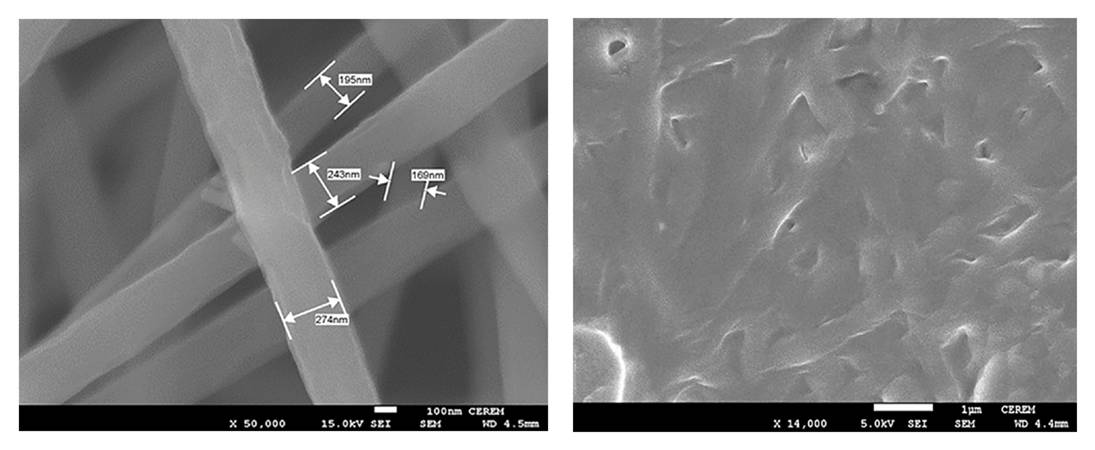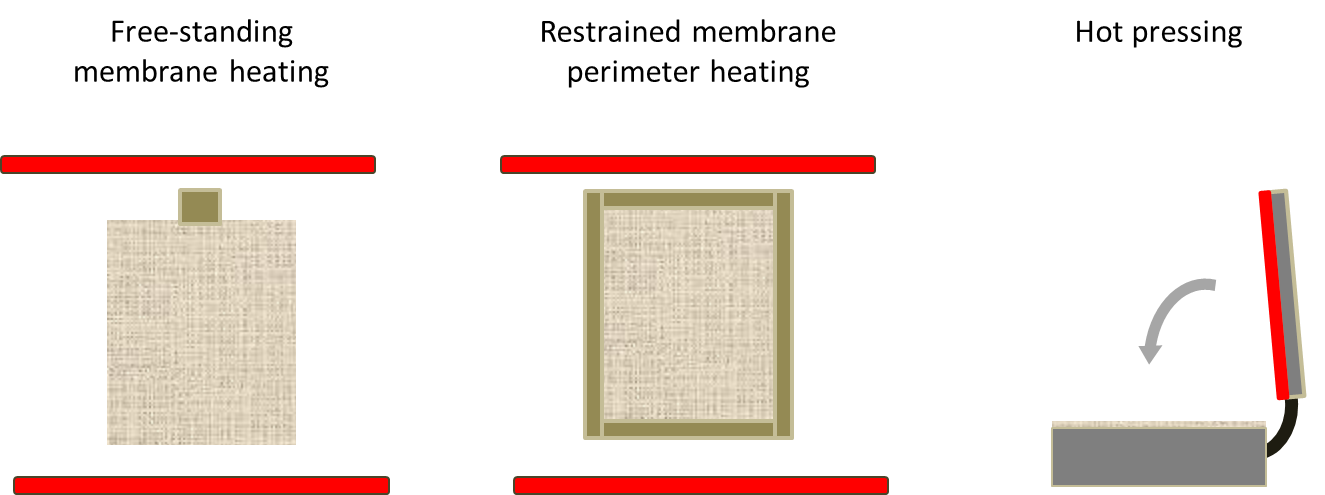▼ Reference
- Ali A A, Rutledge G C. Hot-pressed electrospun PAN nano fibers: An idea for flexible carbon mat. Journal of Materials Processing Technology 2009; 209: 4617.
- Borisova I, Stoilova O, Manolova N, Rashkov I. Modulating the Mechanical Properties of Electrospun PHB/PCL Materials by Using Different Types of Collectors and Heat Sealing. Polymers (Basel). 2020; 12: 693. Open Access
- Chavoshnejad P, Razavi M J. Effect of the Interfiber Bonding on the Mechanical Behavior of Electrospun Fibrous Mats. Scientific Reports 2020; 10: 7709. Open Access
- Chen C. Preparation and Characterization of Electrospun PVDF Membranes and Electrospun PVDF Coated PP Nonwoven Membranes as Lithium-ion Battery Separator. MSc Thesis 2013, North Carolina State University. Open Access
- Dhakate S R, Singla B, Uppal M, Mathur R B. Effect of processing parameters on morphology and thermal properties of electrospun polycarbonate nanofibers. Adv. Mat. Lett. 2010; 1: 200. Open Access
- Es-saheb M, Elzatahry A. Post-Heat Treatment and Mechanical Assessment of Polyvinyl Alcohol Nanofiber Sheet Fabricated by Electrospinning Technique. International Journal of Polymer Science 2014; 605938: 6 pages. Open Access
- Gopal R, Kaur S, Ma Z, Chan C, Ramakrishna S, Matsuura T. Electrospun nanofibrous filtration membrane. Journal of Membrane Science 2006; 281: 581.
- Homaeigohar S S. Functional Electrospun Nanofibrous Membranes for water filtration. PhD Thesis 2011, University of Kiel. Open Access
- Inai R, Kotaki M, Ramakrishna S. Structure and properties of electrospun PLLA single nanofibres. Nanotechnology 2005; 16: 208.
- Kaur S. Thin Film Nanofibrous Composite Electrospun Membrane for Separation of Salts. PhD Thesis 2011, National University of Singapore. Open Access
- Liu F, Guo R, Shen M, Wang S, Shi Z. Effect of Processing Variables on the Morphology of Electrospun poly[(lactic acid)-co-(glycolic acid)] Nanofibers. Macromol. Mater. Eng. 2009; 294: 666.
- Ma Z, Kotaki M, Ramakrishna S. Electrospun cellulose nanofiber as affinity membrane. Journal of Membrane Science 2005; 265: 115.
- Na H, Zhao Y, Zhao C, Zhao C, Yuan X. Effect of hot-press on electrospun poly(vinylidene fluoride) membranes. Polymer Engineering and Science 2008; 48: 934.
- Na H, Li Q, Sun H, Zhao C, Yuan X. Anisotropic Mechanical Properties of Hot-Pressed PVDF Membranes With Higher Fiber Alignments via Electrospinning. Polym. Eng. Sci. 2009; 49: 1291.
- Nasreen S A A N, Sundarrajan S, Nizar S A S, Balamurugan R, Ramakrishna S. Advancement in Electrospun Nanofibrous Membranes Modification and Their Application in Water Treatment. Membranes 2013; 3: 266. Open Access
- Poologasundarampillai G, Fujikura K, Obata A, Kasuga O. Modification and mechanical properties of electrospun blended fibermat of PLGA and siloxane-containing vaterite/PLLA hybrids for bone repair. eXPRESS Polymer Letters 2011; 5: 873. Open Access
- Ribeiro C, Sencadas V, Costa C M, Ribelles J L G, Lanceros-Mendez S. Tailoring the morphology and crystallinity of poly(L-lactide acid) electrospun membranes. Sci. Technol. Adv. Mater. 2011; 12: 015001. Open Access Open Access
- Viet A. Nobium Pentoxide Polymorphs by Electrospinning for Energy Conversion and Storage. MEng Thesis 2010, National University of Singapore. Open Access
- Yang Y, Simeon F, Hatton T A, Rutledge G C. Polyacrylonitrile-based Electrospun Carbon Paper for Electrode Applications. Journal of Applied Polymer Science 2012; 124: 3861.
- Zhang L, Liu L G, Pan F L, Wang D F, Pan Z J. Effects of Heat Treatment on the Morphology and Performance of PSU Electrospun Nanofibrous Membrane. Journal of Engineered Fibers and Fabrics 2012: 7; Special Edition. Open Access
- Zhou T, Yao Y, Xiang R, Wu Y. Formation and characterization of polytetrafluoroethylene nanofiber membranes for vacuum membrane distillation. Journal of Membrane Science 2014; 453: 402.
▼ Credit and Acknowledgement
Author
Wee-Eong TEO View profile
Email: weeeong@yahoo.com
 ElectrospinTech
ElectrospinTech

